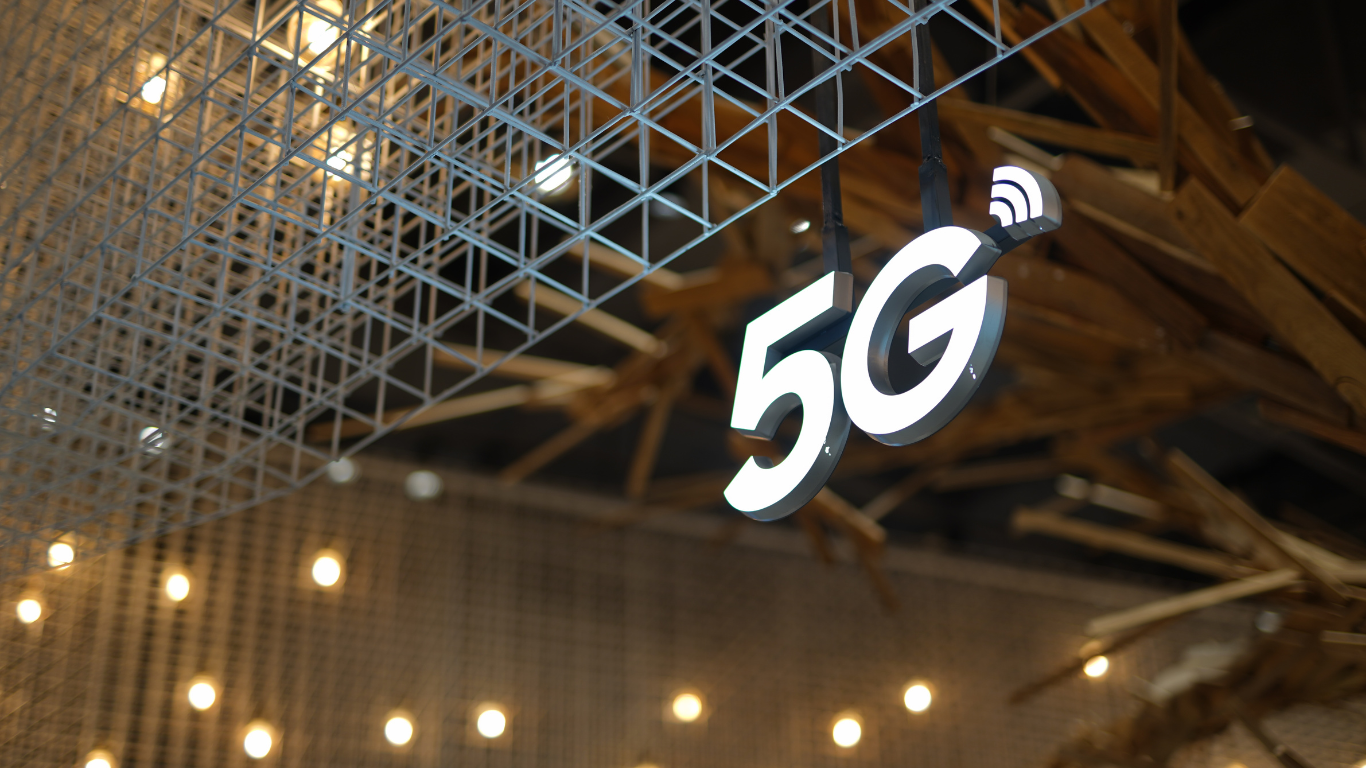The 2G spectrum case remains one of the most talked-about scandals in India’s history, a saga that intertwines politics, telecommunications, and legal battles. If you’re here to understand what the 2G spectrum case is, how it unfolded, and where it stands as of March 27, 2025, you’re in the right place. This 3000+ word guide will walk you through its origins, key players, allegations, court rulings, and recent developments—all in an informational tone designed for readers eager to learn. Whether you’re a student, a professional, or just curious about this landmark controversy, we’ll break it down step-by-step, ensuring you grasp every facet of this complex story. Let’s dive into the 2G spectrum case and uncover why it continues to captivate attention nearly two decades after it first emerged.
What Is the 2G Spectrum Case?
The 2G spectrum case refers to a high-profile political and financial controversy in India involving the allocation of 122 second-generation (2G) telecommunications spectrum licenses in 2008. At its heart, the case centers on allegations that government officials, notably then-Telecom Minister A. Raja, manipulated the process to favor specific telecom companies, resulting in a massive loss to the public exchequer—estimated by some at ₹1.76 lakh crore (approximately US$25 billion at the time). The scandal erupted during the second term of the United Progressive Alliance (UPA) government, led by Prime Minister Manmohan Singh, and quickly became a symbol of alleged corruption at the highest levels.
The term “2G” refers to second-generation wireless technology, which enabled mobile networks to offer voice calls and basic data services like SMS. Spectrum, the invisible radio waves that carry these signals, is a scarce national resource, and its allocation is tightly regulated. In 2008, instead of auctioning this valuable asset, the Department of Telecommunications (DoT) issued licenses on a first-come, first-served basis at 2001 prices—despite a vastly expanded mobile market by then. This decision sparked outrage, investigations, and a legal saga that’s still unfolding in 2025.
Historical Background of the 2G Spectrum Case
To fully grasp the 2G spectrum case, we need to rewind to India’s telecom revolution. By the early 2000s, mobile phones were transforming communication, with subscriber numbers soaring from 4 million in 2001 to 350 million by 2008. The demand for spectrum grew exponentially, making its allocation a critical—and lucrative—government responsibility.
Pre-2008 Context
Before 2008, spectrum allocation in India followed a mix of auctions and administrative processes. The Telecom Regulatory Authority of India (TRAI) often advised on pricing and methods, but the DoT held final authority. In 2007, A. Raja assumed the role of Telecom Minister under the UPA coalition, setting the stage for the controversy.
The 2008 Allocation
In August 2007, the DoT began the process of allotting 122 new 2G Unified Access Service (UAS) licenses across India’s 22 telecom zones. On September 25, 2007, Raja announced a cut-off date for applications, abruptly moved from October 1 to September 25, shrinking the window for submissions. By January 10, 2008, licenses were issued at ₹1,658 crore—pegged to 2001 rates—despite objections from multiple quarters, including the Prime Minister’s Office (PMO), the Finance Ministry, and TRAI, which had recommended auctions.
This decision favored companies like Swan Telecom and Unitech Wireless, some of which allegedly lacked telecom experience or eligibility. Critics claimed Raja manipulated the first-come, first-served policy, accepted bribes, and ignored transparent norms, leading to a firestorm of scrutiny.
Key Players in the 2G Spectrum Case
The 2G spectrum case involves a cast of political figures, bureaucrats, and corporate entities. Here’s who played a pivotal role:
1. A. Raja
- Role: Telecom Minister (2007-2010).
- Allegations: Accused of masterminding the scam by selling licenses at undervalued prices, advancing cut-off dates, and favoring select firms for kickbacks estimated at ₹30 billion (US$340 million).
- Status: Arrested in 2011, acquitted in 2017, but facing ongoing appeals in 2025.
2. Kanimozhi Karunanidhi
- Role: DMK MP and daughter of party leader M. Karunanidhi.
- Allegations: Linked to a ₹200 crore bribe allegedly funneled from Swan Telecom to Kalaignar TV, a DMK-affiliated channel.
- Status: Acquitted in 2017, with appeals pending.
3. Siddharth Behura
- Role: Former Telecom Secretary.
- Allegations: Conspired with Raja to manipulate the allocation process.
- Status: Acquitted in 2017, appealing in 2025.
4. R.K. Chandolia
- Role: Raja’s private secretary.
- Allegations: Assisted in blocking competitors by shutting application counters early.
- Status: Acquitted in 2017, under appeal.
5. Corporate Entities
- Swan Telecom, Unitech Wireless, Reliance Telecom: Accused of benefiting from rigged allocations, selling stakes at massive profits post-licensing.
- Key Figures: Shahid Usman Balwa (Swan Telecom), Sanjay Chandra (Unitech), and others faced charges but were acquitted.
6. Manmohan Singh
- Role: Prime Minister (2004-2014).
- Involvement: Advised Raja to revise fees and ensure transparency in 2007 letters, but critics argued he didn’t intervene strongly enough.
These players fueled a narrative of corruption that rocked India’s political and corporate landscape.
Allegations and Investigations
The 2G spectrum case hinges on several explosive allegations, backed by investigations from the Central Bureau of Investigation (CBI), Enforcement Directorate (ED), and Comptroller and Auditor General (CAG).
Core Allegations
- Undervaluation: Licenses sold at 2001 prices (₹1,658 crore) despite a market boom, bypassing auctions.
- Manipulation: Raja allegedly advanced the cut-off date from October 1 to September 25, 2007, and gave applicants mere hours on January 10, 2008, to submit payments—favoring prepared firms.
- Bribery: CBI alleged Raja received ₹30 billion, with ₹200 crore routed to Kalaignar TV via Swan Telecom.
- Ineligibility: Companies like Swan and Unitech, with no telecom experience, secured licenses, later selling stakes for billions.
CAG Report (2010)
The CAG’s November 2010 report was a bombshell, estimating a “presumptive loss” of ₹1.76 lakh crore to the exchequer. It criticized:
- No auctions, ignoring TRAI’s market-rate advice.
- Licenses to ineligible firms with falsified documents.
- Raja’s dismissal of Finance and Law Ministry concerns.
CBI and ED Probes
- CBI: Filed its first case in October 2009, alleging criminal conspiracy, cheating, forgery, and corruption under the Prevention of Corruption Act. Raja was arrested on February 2, 2011.
- ED: Investigated money laundering, tracing funds to offshore accounts and Kalaignar TV.
These probes painted a damning picture, though evidence later faced scrutiny in court.
Timeline of the 2G Spectrum Case
The 2G spectrum case unfolded over years. Here’s a detailed chronology:
2007-2008: The Allocation
- May 2007: A. Raja becomes Telecom Minister.
- August 2007: DoT initiates 2G license process.
- September 25, 2007: Cut-off date set, later advanced from October 1.
- January 10, 2008: 122 licenses issued at 2001 prices.
2009-2011: Investigations Begin
- October 21, 2009: CBI registers case after Central Vigilance Commission flags irregularities.
- November 10, 2010: CAG report tables ₹1.76 lakh crore loss.
- November 14, 2010: Raja resigns amid pressure.
- February 2, 2011: Raja arrested by CBI.
2012: Supreme Court Ruling
- February 2, 2012: Supreme Court cancels all 122 licenses, mandates auctions for natural resources, calling the allocation “unconstitutional and arbitrary.”
2017: Acquittal
- December 21, 2017: Special CBI Court acquits Raja, Kanimozhi, and 15 others, citing insufficient evidence. Judge O.P. Saini rules the scam was “artfully arranged” with exaggerated claims.
2018-2024: Appeals
- March 19-20, 2018: CBI and ED appeal the acquittal in Delhi High Court.
- March 22, 2024: Delhi High Court admits CBI’s appeal, noting “contradictions” in the 2017 verdict for deeper review.
2025: Current Status
- As of March 27, 2025, the Delhi High Court continues to hear CBI and ED appeals on a day-to-day basis, while the Supreme Court reviews a government plea to modify its 2012 auction-only mandate.
Legal Outcomes and Rulings
The 2G spectrum case has seen dramatic legal twists:
2012 Supreme Court Verdict
- Ruling: Quashed all 122 licenses, fined companies like Unitech and Swan ₹5 crore each, and mandated auctions for spectrum allocation.
- Impact: Set a precedent for transparency in resource distribution.
2017 Special Court Acquittal
- Ruling: Judge O.P. Saini acquitted all accused, stating the CBI “miserably failed” to prove charges. He called the ₹1.76 lakh crore loss a fabricated narrative.
- Reaction: DMAntes celebrated, while Congress claimed vindication. The BJP and CBI contested the verdict.
2024-2025 Appeals
- Delhi High Court: In March 2024, Justice Dinesh Kumar Sharma admitted CBI’s appeal, scheduling hearings from October 2025 to re-evaluate evidence.
- Supreme Court: In April 2024, the government sought to modify the 2012 ruling, arguing auctions aren’t always optimal (e.g., for public safety or low-demand scenarios). This plea remains pending.
These rulings keep the case alive, with no final resolution as of March 2025.
Financial Impact of the 2G Spectrum Case
The financial stakes of the 2G spectrum case were staggering:
CAG’s Loss Estimate
- ₹1.76 Lakh Crore: Based on 3G auction prices (2010) and stakes sold by Swan (₹58,000 crore) and Unitech (₹68,000 crore).
- Criticism: Critics argued this was “presumptive,” not actual, as no revenue was lost—just undervalued.
Post-2012 Auctions
- After the Supreme Court’s cancellation, auctions in 2012-2014 fetched over ₹1 lakh crore, proving spectrum’s true market value but falling short of CAG’s estimate.
Corporate Gains
- Swan Telecom sold a 45% stake to Etisalat for ₹4,200 crore; Unitech sold 60% to Telenor for ₹6,200 crore—massive profits from cheap licenses.
This financial fallout fueled public outrage and shaped telecom policy reforms.
Political Ramifications
The 2G spectrum case left a deep mark on Indian politics:
UPA’s Downfall
- The scandal, alongside Coalgate, tarnished the UPA’s image, contributing to its 2014 election loss to the BJP.
DMK Fallout
- The DMK, a UPA ally, faced embarrassment with Raja and Kanimozhi’s arrests, though their 2017 acquittal offered relief.
Policy Shifts
- Post-2012, the government adopted auctions as standard, a legacy of the Supreme Court’s ruling.
The case remains a political football, with parties leveraging it for leverage in 2025 debates.
Recent Updates on the 2G Spectrum Case in 2025
As of March 27, 2025, the 2G spectrum case is far from resolved:
Delhi High Court
- Hearings began in October 2024 on CBI and ED appeals against the 2017 acquittal. The court’s 2024 decision to “re-appreciate evidence” signals a potential reversal, with daily proceedings ongoing.
Supreme Court
- The government’s April 2024 plea to allow administrative spectrum allocation (e.g., for security or space communication) awaits a hearing. This could reshape the 2012 auction mandate.
Public Sentiment
- Posts on X reflect frustration over delays, with some questioning the CBI’s evidence and others demanding justice for the alleged loss.
These developments keep the 2G spectrum case in the spotlight, with outcomes still uncertain.
How the 2G Spectrum Case Compares to Other Scandals
How does the 2G spectrum case stack up against India’s other big scandals?
| Aspect | 2G Spectrum Case | Coalgate | Commonwealth Games |
|---|---|---|---|
| Estimated Loss | ₹1.76 lakh crore | ₹1.86 lakh crore | ₹70,000 crore |
| Year | 2008 | 1993-2010 | 2010 |
| Key Issue | Spectrum allocation | Coal block allocation | Event mismanagement |
| Legal Outcome | Acquitted (under appeal) | Licenses canceled | Convictions |
| Political Impact | UPA weakened | UPA hit | UPA criticized |
The 2G spectrum case stands out for its scale and ongoing legal limbo, distinguishing it from resolved cases like the CWG scam.
Lessons from the 2G Spectrum Case
The 2G spectrum case offers enduring lessons:
- Transparency Matters: Auctions became the norm post-2012, ensuring fairness in resource allocation.
- Evidence is Key: The 2017 acquittal highlighted the need for concrete proof over speculation.
- Policy Evolution: It spurred telecom reforms, balancing public interest and industry growth.
These takeaways continue to shape India’s governance in 2025.
Why the 2G Spectrum Case Still Matters in 2025
The 2G spectrum case isn’t just a relic of the past—it’s a living case study in accountability, policy, and justice. Its unresolved status keeps it relevant, raising questions about corruption, judicial efficiency, and the valuation of public assets. As India advances its 5G rollout, the echoes of 2G remind us how pivotal telecom policy remains to national development.
Conclusion
The 2G spectrum case is a saga of ambition, controversy, and redemption—or lack thereof. From its explosive allegations in 2008 to the dramatic 2017 acquittal and ongoing appeals in 2025, it’s a story that’s captivated India for nearly two decades. Whether you see it as a colossal scam or an overhyped narrative, its impact on telecom, politics, and law is undeniable. Stay tuned as the Delhi High Court and Supreme Court shape its next chapter—because the 2G spectrum case is far from over.




